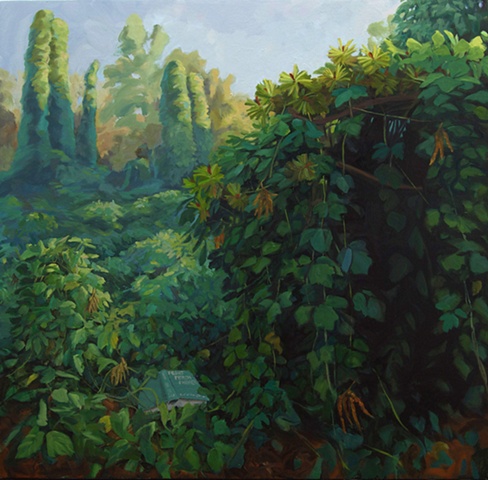invasive species
Pueraria montana
In the 1930s and 1940s, kudzu was propagated and promoted by the Soil Conservation Service as a means of holding soil on the swiftly eroding gullies of the deforested southern landscape. Farmers were paid $8.00 per acre by the Soil Erosion Service to plant kudzu, and more than 1.2 million acres were planted under this subsidized program. In his 1949 book, Front Porch Farmer, Channing Cope presents kudzu as the panacea that will allow farmers to adopt a life of leisure and relaxation, as this new crop “works while you sleep.” Kudzu was widely promoted as a drought-resistant, high-nitrogen forage crop. However, it proved difficult to bale. Direct grazing was used to some extent, but the vines are damaged by trampling, and this practice fell into disuse. In the 1950s, kudzu was recognized as a weed, and removed from the list of species acceptable for use under the Agricultural Conservation Program. Estimates of kudzu infestation in the southeast vary greatly, from as low as two million to as high as seven million acres.
